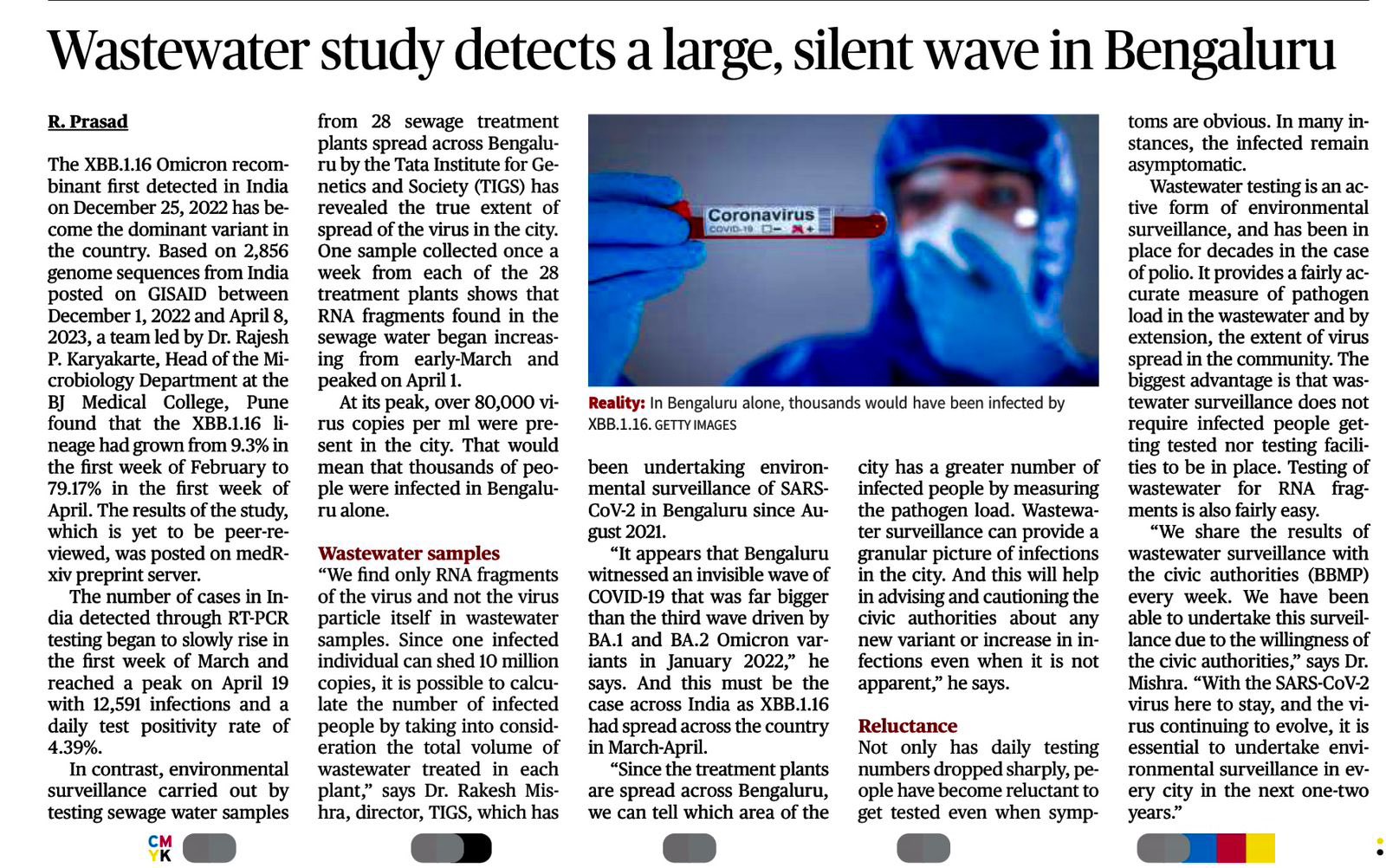The XBB.1.16 Omicron recombinant first detected in India on December 25, 2022 has become the dominant variant in the country. Based on 2,856 genome sequences from India posted on GISAID between December 1, 2022 and April 8, 2023, a team led by Dr. Rajesh P. Karyakarte, Head of the Microbiology Department at the BJ Medical College, Pune found that the XBB.1.16 lineage had grown from 9.3% in the first week of February to 79.17% in the first week of April. The results of the study, which is yet to be peer-reviewed, was posted on medRxiv preprint server.
The number of cases in India detected through RT-PCR testing began to slowly rise in the first week of March and reached a peak on April 19 with 12,591 infections and a daily test positivity rate of 4.39%. With daily testing remaining very low, the number of cases detected does not reflect the actual spread of the XBB.1.16 variant.
In contrast, environmental surveillance carried out by testing sewage water samples from 28 sewage treatment plants spread across Bengaluru by the Tata Institute for Genetics and Society (TIGS) has revealed the true extent of spread of the virus in the city. One sample collected once a week from each of the 28 treatment plants shows that RNA fragments found in the sewage water began increasing from early-March and peaked on April 1.
At its peak, over 80,000 virus copies per ml were present in the city. That would mean that thousands of people were infected in Bengaluru alone.
Read the full article here or below

